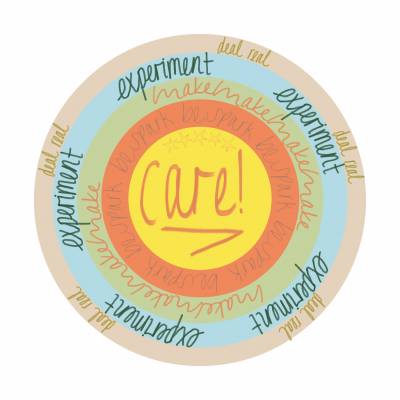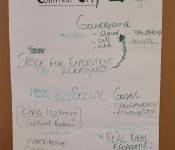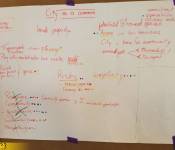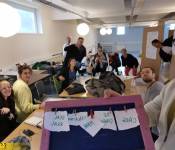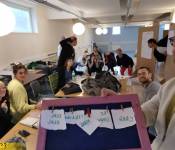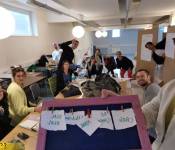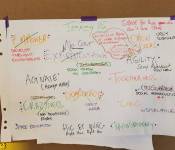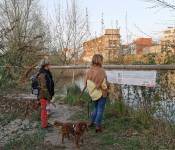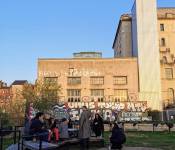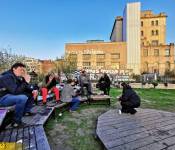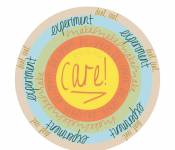BITU Communa Bruxelles
Table des matières
A mission to conquest the city as a common - by Makers & Temporary Users
« To say that the city is a common is to suggest that the city is a shared resource — open to, shared with, and belonging to many types of people. » 1) The Common City - Paul Chatterton
The physical places we live give us a sense of place, sustain us and provide wellbeing and shelter.
However, something is deeply amiss.
Place making has been subject to abstract and alienated planning systems, scarred by bureaucracy, corporate greed and concentrated land ownership.
Urban economies have increasingly become locked-in to fast money, volatile inward investment, domination by big brands, zero hours contracts and low pay and poor skills.
And to confound this, urban democracy and governance are intensely unequal and hierarchical.
In the west, city governments are rarely governed beyond an established party political elite while city or metro mayors have done little to radically decentralize power to neighborhoods.
We live in deeply uncommon times. The common city points to a fundamental shift in the way that place making, urban economies and democracy are undertaken.
These come in many guises: novel forms of citizen led housing, community ownership, localized and solidarity economies, collaborative production, local currencies and civic finance.
Moreover, radically new ways of doing democracy are being activated through experiments in popular assemblies, participatory budgets, citizens forums, distributed networks, coproduction, co-operatives, as well as civil disobedience and direct action that call attention to injustices.
The Common City Manifesto
The « Common City Manifest » 2) is one of the four part of « A Manifesto for Real Change » 3). The other three are « The Car Free City Manifesto » 4), « The Post Carbon City Manifesto » 5) and « The Bio City Manifesto » 6).
Objectives of temporary use - Communa
Reanimate spaces
Initiate the reconquest of spaces, revitalize abandoned or unoccupied sites, move a space.
Value
Questioning an urban space, modifying its image and its appropriation by valuing its potential, improving it and generating a dynamic in its occupation.
Prototype
Testing, questioning and experimenting with practices on a site to prefigure its future layout.
Adjust
Encourage the appropriation of a relatively recent place and its activation in the within a neighborhood by involving its inhabitants in order to adjust, finalize urban transformations.
Communicate
Transitory experience as a communication tool to arouse curiosity and make the territory known to as many people as possible; inform and initiate consultation and dialogue with the inhabitants and users of a complex or an entire neighborhood. Create a point of reference to encourage discussion and participation of the inhabitants, helping them to understand the issues urban
Progress of workshop - 24 March 2022
Steps
- ICEBREAKER (15’)
- EXERCICE presentation & source for CITY AS A COMMON (10’) “A MISSION (TAGLINE) FORMAKERS & TEMPORARY USERS TO CONQUEST THE CITY AS A COMMON ”
- Theater for presentation CITY AS A COMMON (2 groups) (5’+35’)
- CREATE YOUR DEFINITION “TEMPORY USE / COMMON CITY MANIFESTO ” (2 groups) (35’)
IN THE VISION OF “CITY AS A COMMON”, TEMPORARY USE IS A WAY TO/CREATES/BRINGS ….
Pause (20’)
- SELECTION: From these 2 definitions: please highlight main words - with the support of the audience (15’)
- BRAINSTORMING (10’) ALL ACTIONS COMING TO YOUR MINDS TO TARGET THIS OBJECTIVE
- CATEGORIES (10’)
- CHOOSE 5 ACTIONS WORDS TO CREATE THE PERFECT TAGLINE FOR CONQUEST OF THE CITY (15’) (ex: hackerspace - learn/make/share)
- Feedback & Celebration
